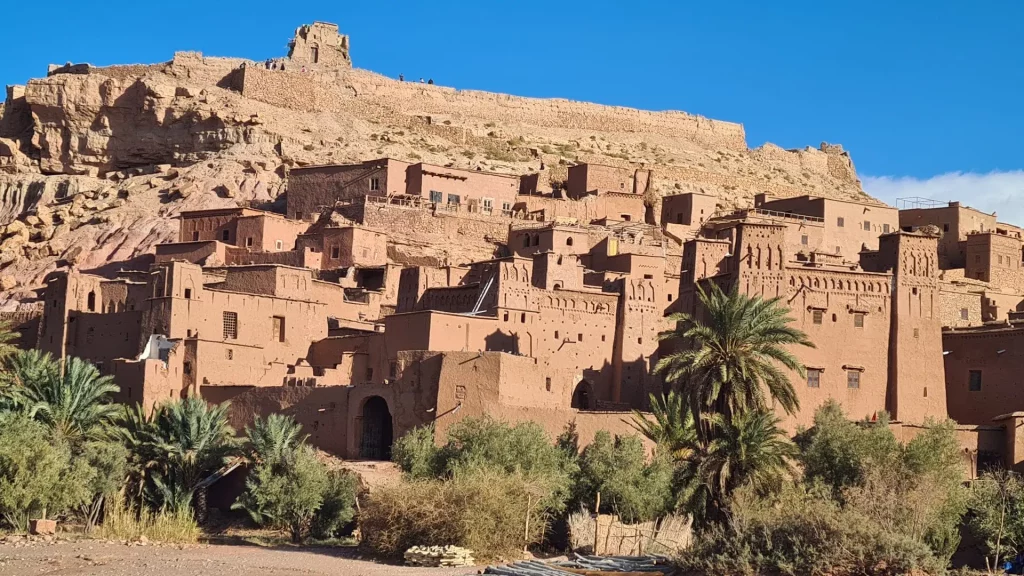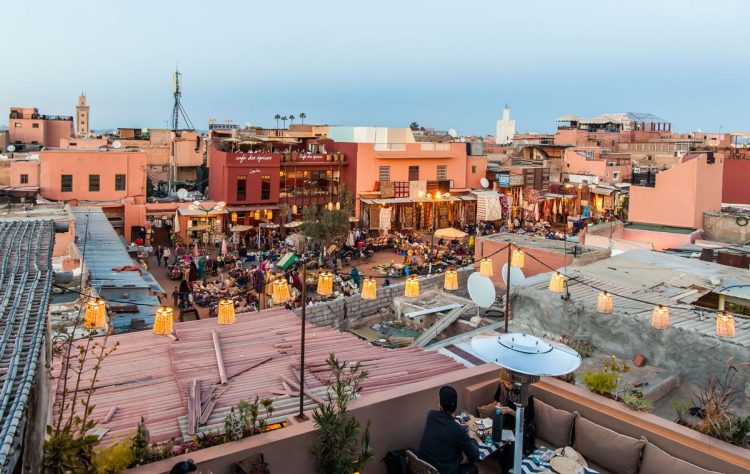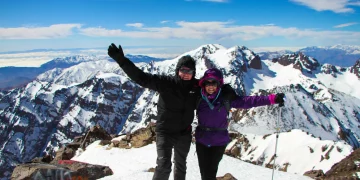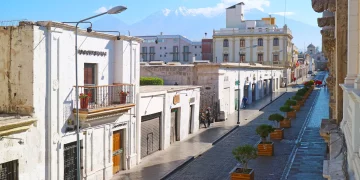A Solo Traveler Recounts a 10-Day, Bus-Only Route from Tangier to the Sahara
In a country often marketed through rooftop riads, luxury desert camps, and guided kasbah tours, traveling across Morocco by local bus feels like a beautiful act of rebellion. That’s exactly what Sofia, a solo traveler from Lisbon, set out to do in early 2025—chart her own course from the windswept tip of Tangier to the orange dunes of Merzouga, relying on nothing more than local buses, her backpack, a few phrases in French and Arabic, and an appetite for the unpredictable. Over 10 days and more than a thousand kilometers, she zigzagged through medinas, mountains, and market towns. No private drivers. No polished tour groups. Just the open road, community guesthouses, and the chaotic charm of Moroccan public transport.
Sofia began in Tangier, where the Atlantic crashes into the Mediterranean and ferries from Spain glide into port each morning. After a night in a family-run guesthouse nestled in the Kasbah, she caught her first bus heading south toward Chefchaouen. The ticket cost less than four euros. The ride? Winding, loud, and exhilarating. There were schoolchildren, live chickens in burlap sacks, and a teenage boy who offered her roasted almonds while they admired the Rif Mountains through dusty windows.
By late afternoon, Chefchaouen appeared like a dream—a town bathed entirely in shades of blue, cradled by rugged peaks. Here, Sofia wandered steep alleyways, tasted goat cheese at a local market, and chatted with the guesthouse owner about the best route toward Fez. “No grand taxi,” he insisted. “Take the early CTM bus. More reliable.” She followed his advice and found herself the next day on a surprisingly modern coach, sharing snacks with a veiled grandmother and watching the landscape shift from pine forests to open plains.
Fez greeted her with noise, history, and the metallic scent of ancient tanneries. She ducked into medina courtyards, visited a centuries-old university, and stayed in a crumbling but elegant guesthouse run by a family who served her mint tea each evening on a tiled rooftop. The beauty of this trip wasn’t just the destinations—it was the way strangers became guides, bus drivers became translators, and mishaps turned into memories.
Highlights Community-Run Guesthouses, Local Guides, and Mid-Route Mishaps
By the time Sofia reached the Middle Atlas town of Azrou, her trip had taken on a rhythm—find the local bus station, buy a handwritten ticket, wait with students and shopkeepers, hope the bus showed up on time, and trust that somehow, things would work out. They always did, even when they didn’t.
One leg of the journey, from Azrou to Midelt, involved an unplanned detour when the scheduled minibus broke down outside a roadside café. Sofia and a group of fellow passengers—none of whom spoke English—shared orange Fanta and laughed through the delay, eventually flagging down a passing pickup truck that agreed to take them part of the way. It was dusty, loud, and wildly unregulated. But it worked. And in the bed of that truck, Sofia learned a few phrases in Darija and was handed a hardboiled egg by a woman in a bright yellow djellaba.
Community-run guesthouses became the pillars of her journey. In Midelt, she slept in a clay-brick home where the owner doubled as a hiking guide. In the Todra Gorge, she stayed in a riverside guesthouse built into the cliffs, eating tagine with other travelers while her host explained how tourism was reviving the local economy. These weren’t just accommodations—they were stories, relationships, and windows into how Moroccans live and adapt outside the glossy tourist lens.

Along the way, she found herself invited into weddings, asked to teach a few English words to children in a Berber village, and occasionally reminded that traveling without a tour meant accepting delays, dusty bus terminals, and the need to trust strangers. One particularly long ride from Errachidia to Rissani involved two tire changes and an unexpected goat that wandered on board at a rural stop. No one flinched. This, she realized, was the joy of it—the controlled chaos, the unrehearsed beauty.
When she finally arrived in Merzouga, the entry point to the Sahara, the air felt drier, the sun more intense, the pace slower. She took a short camel ride at sunset—booked through a cousin of her guesthouse host—and watched the dunes glow pink, red, and gold as the wind curled fine sand into the sky. That night, she slept in a simple tent with a woven blanket, no Wi-Fi, and only the sounds of wind and distant drums.
There was no certificate of completion, no “Morocco in 10 Days” badge. But what Sofia took home was something more lasting: confidence in navigating without scripts, appreciation for the people who helped her cross a country one dusty kilometer at a time, and the quiet pride of having done it on her own terms.
Appeals to Independent Travelers Craving Control, Chaos, and Character
For Roamcox readers who thrive on independence, Morocco by local bus in 2025 is a goldmine of texture, unpredictability, and character. The country’s public transport system is more navigable than it appears at first glance, especially for travelers willing to blend structure with spontaneity. Intercity buses—especially those run by CTM or Supratours—are relatively comfortable and reliable. But smaller, local operators offer a more immersive experience, if not always punctual.
Bus stations double as marketplaces of human interaction. Tickets are bought at kiosks or scribbled by hand, buses depart when full or when the driver feels like it, and seating is rarely guaranteed. But therein lies the charm. This is Morocco not curated for Instagram, but lived in full: alive, unruly, generous, and real.
Independent travelers can also take advantage of Morocco’s remarkable hospitality. In every town, there are guesthouses that offer more than just a bed—homes where the line between guest and family blurs, where dinners become lessons in couscous preparation, and where rooftop conversations stretch long into the night. Local guides, often connected through word-of-mouth, can arrange last-mile adventures—hikes, market tours, storytelling sessions—without the price tag or polish of commercial operators.
What makes Morocco so rewarding for this style of travel is its openness. It invites interaction. It responds to curiosity. Speak a little French or Arabic, and the country opens like a map. Sit on the right side of the bus, and you’ll see valleys, sheep, and snow-capped peaks slide past the window. Say yes to an invitation, and suddenly you’re eating dates and almonds in a mountain village you hadn’t planned to visit.
For those worried about safety, Sofia emphasized that common-sense awareness—watching belongings, avoiding travel after dark in remote areas—goes a long way. She never felt threatened, and often found herself surrounded by helpful strangers who ensured she got off at the right stop or steered her toward a good restaurant.
The key is to travel with respect, flexibility, and a sense of humor. Morocco’s buses won’t always run on time. Some routes may not exist until you ask about them. But the joy lies in that uncertainty—in the human connections, the unexpected detours, and the moments that no itinerary could have planned.
For every traveler tired of over-curated experiences, of being shuttled from attraction to attraction with little sense of place, crossing Morocco by bus offers the antidote. It’s travel with friction, yes—but also with feeling. In 2025, it’s a path less taken that still feels alive with possibility.





















